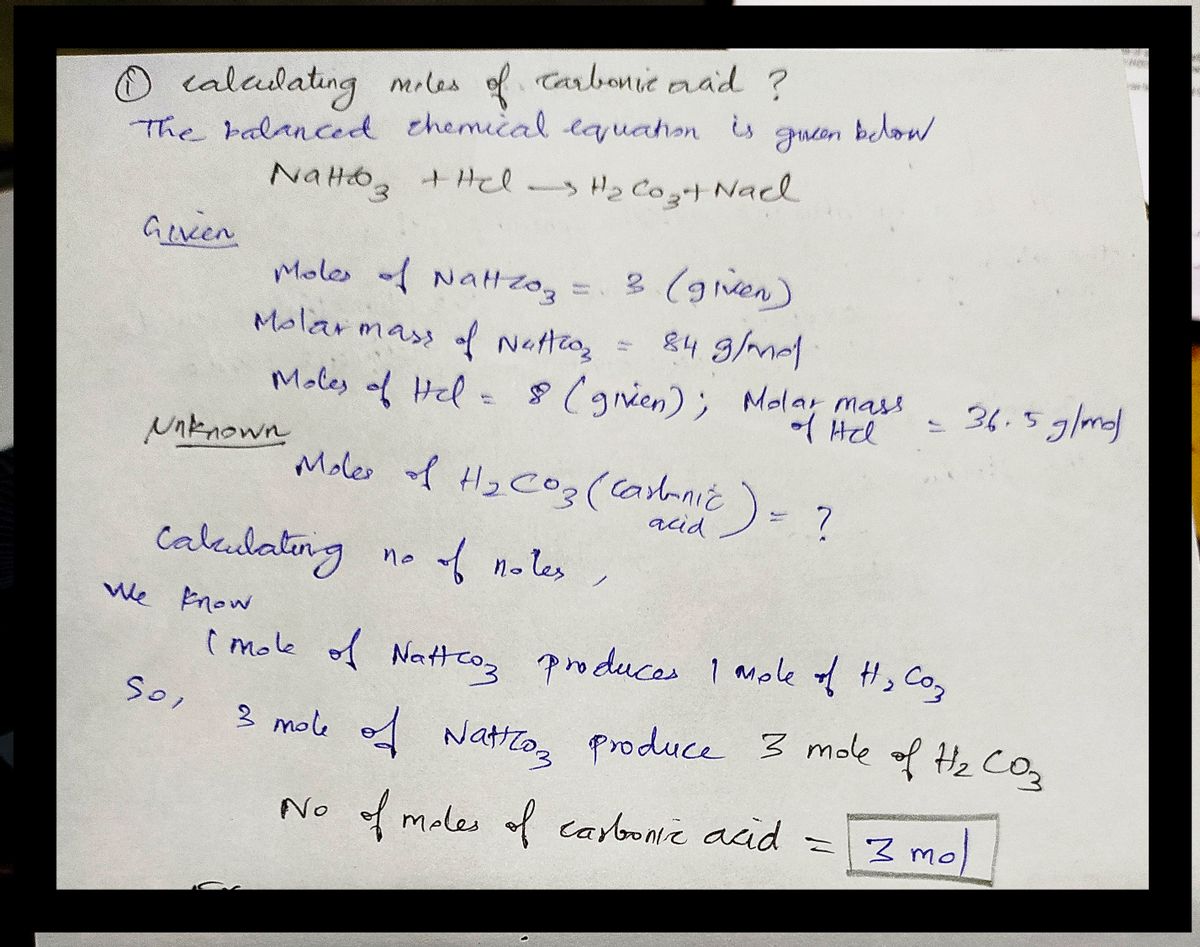The first step in the reaction of Alka–Seltzer with stomach acid consists of one mole of sodium bicarbonate (NaHCO3) reacting with one mole of hydrochloric acid (HCl) to produce one mole of carbonic acid (H2CO3), and one mole of sodium chloride (NaCl). Using this chemical stoichiometry, determine the number of moles of carbonic acid that can be produced from 3 mol NaHCO3 and 8 mol HCl. moles of carbonic acid : mol How much excess reactant remains after the reaction? excess reactant : mol
1.) The first step in the reaction of Alka–Seltzer with stomach acid consists of one mole of sodium bicarbonate (NaHCO3) reacting with one mole of hydrochloric acid (HCl) to produce one mole of carbonic acid (H2CO3), and one mole of sodium chloride (NaCl).
Using this chemical stoichiometry, determine the number of moles of carbonic acid that can be produced from 3 mol NaHCO3 and 8 mol HCl.
moles of carbonic acid : mol
How much excess reactant remains after the reaction?
excess reactant : mol
2.)
The concept of determining which reactant is limiting and which is in excess is akin to determining the number of sandwiches that can be made from a set number of ingredients.
Assuming that a cheese sandwich consists of 2 slices of bread and 3 slices of cheese, determine the number of whole cheese sandwiches that can be prepared from 28 slices of bread and 39 slices of cheese.
number of sandwiches:
What quantity of the ingredient in excess remains?
quantity of excess ingredient remaining:

Trending now
This is a popular solution!
Step by step
Solved in 2 steps with 2 images









